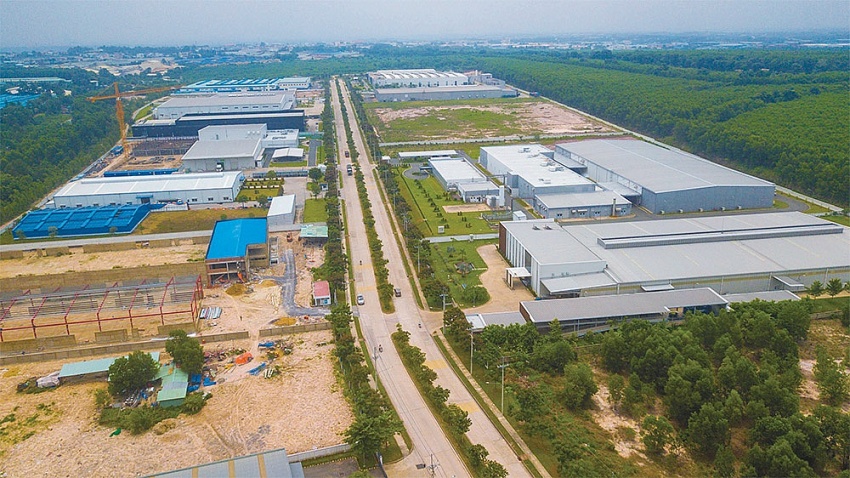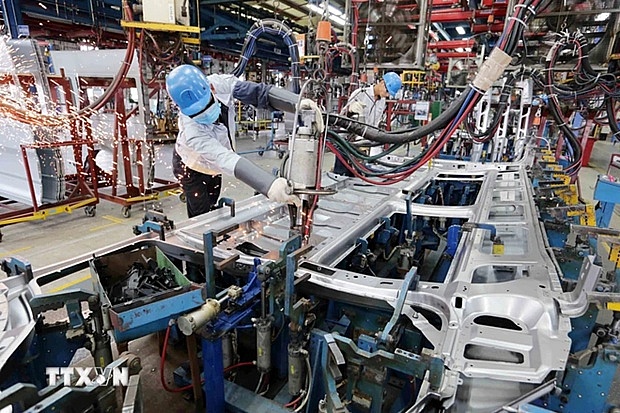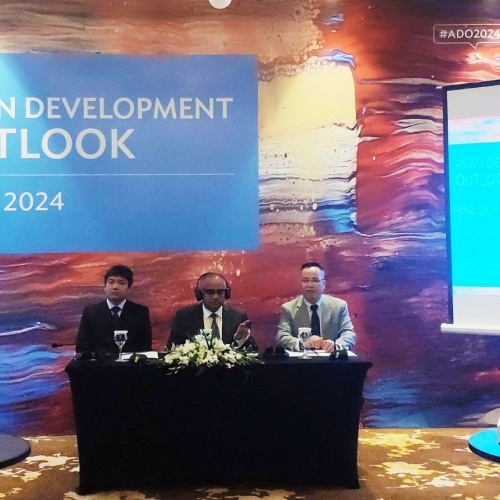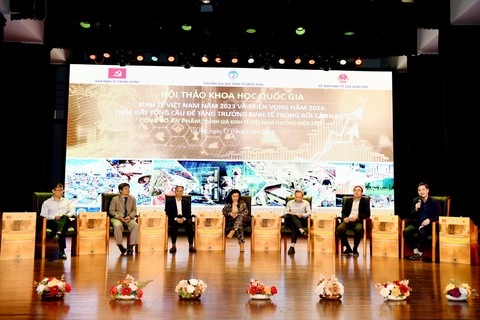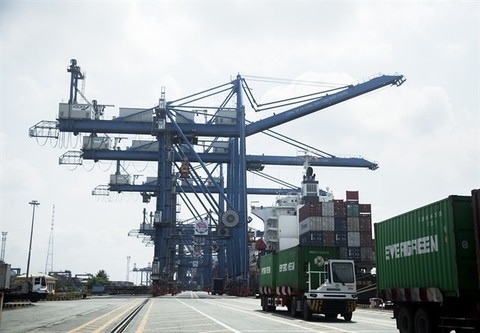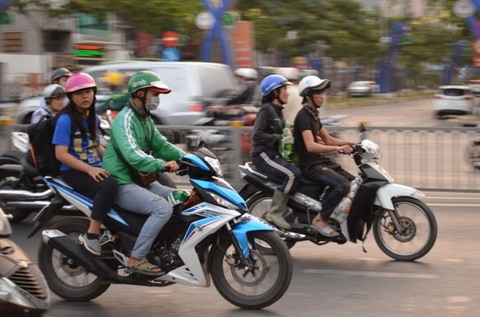FIEs as the “trail-blazers” of Vietnam’s stellar growth
FIEs as the “trail-blazers” of Vietnam’s stellar growth
Foreign direct investment has been an integral part of the Vietnamese economy in the past three decades. Nguyen Chi Dung, Minister of Planning and Investment, told Nguyen Duc that foreign-invested enterprises can be described as “trail-blazers” of Vietnam’s socioeconomic development.
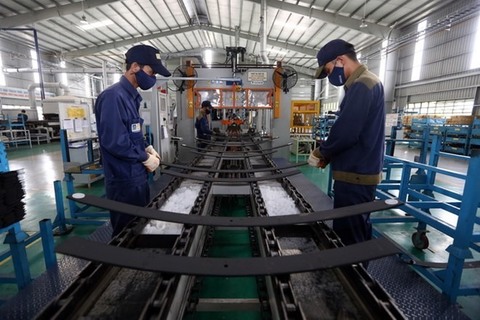
It has been three decades since Vietnam started opening its doors to foreign direct investment (FDI). What role has FDI played in the country’s socioeconomic development in your view?
In short, I would describe foreign-invested enterprises (FIEs) as the “trail-blazers” helping propel Vietnam’s socioeconomic development. Three decades ago, as soon as Vietnam enacted the Law on Foreign Investment, foreign investors arrived to set up their manufacturing facilities and engaged in business in the country. They have worked like “busy bees” to create “sweet fruits”. They have reaped the benefits and made great contributions to Vietnam’s socioeconomic development since then.
It is noteworthy that at the time, the country’s doi moi policy had been taking place for about a year and the country’s economy faced mounting challenges. Now, after three decades of FDI attraction, the country has performed spectacular growth across the board. Vietnam’s achievements after more than 30 years of economic reforms would have been impossible without FDI.
Many domestic and international economists have evaluated Vietnam as a bright destination for global FDI inflows, which many other countries may envy. What do you think about this evaluation? What are the biggest contributions FDI has made to Vietnam?
After more than three decades of the open-door policy, Vietnam has become one of the most successful FDI recipient economies in the region. FIEs have been lending the country dynamism and making important contributions to socioeconomic development.
To deliver a comprehensive assessment of the contributions FDI has made, I would like to emphasise the realms as follows.
First, FIEs have brought a new investment attraction model with spillover effects to propel economic growth, thus inspiring the more effective utilisation of domestic resources. FDI has been an important investment channel, making up a quarter of the total social investment capital. In the meantime, the share of FDI in Vietnam’s GDP stands at about 20 per cent.
Second, FIEs have accounted for an ever-increasing proportion of Vietnam’s total export value, with the ratio reaching 72.6 per cent in 2017. More importantly, FIEs have helped reshape Vietnam’s export items by reducing the percentage of raw materials and semi-processed products in total overseas shipments and raising the proportion of finished products with high added-value.
The third is FIEs’ noteworthy contribution to state coffers, raising from $1.8 billion during 1994-2000 to an impressive $14.2 billion during 2001-2010, and reaching $23.7 billion during 2011-2015—14 per cent of the total. In 2017, FIEs contributed nearly $8 billion to state coffers, making up 14.46 per cent of the total.
Fourth, FIEs played an integral part in restructuring the Vietnamese economy towards industrialisation. As of now, 58.2 per cent of FDI has been channelled into the manufacturing and processing sector, and FIEs have generated more than 50 per cent of the country’s total industrial production value. They have also helped shape up Vietnam’s key industries, such as telecommunications, oil and gas, electronics, information technology, as well as steel and cement. Regarding the restructuring of the Vietnamese agricultural sector, FIEs have helped diversify farm production and boosting the value of exports. Some FIEs have transferred high-technologies and high-quality seeds to their domestic counterparts.
Fifth, FIEs have helped provide more jobs, improve the quality of human resources, and change the labour structure. They have so far employed more than 3.5 million labourers directly and 4-5 million indirectly. FIEs have been pioneering on-the-job and overseas training, helping to improve skills of local technical and managerial employees, many of whom can now replace foreign experts.
Sixth, FIEs have contributed to bolstering Vietnam’s technology readiness, particularly in the sectors of oil and gas, electronics, telecommunications, information technology, motorbike and auto manufacturing, garment and textile, and footwear, with the greatest advances seen in telecommunications and oil and gas. In addition, FIEs have been encouraging domestic businesses to invest in modern technology to enhance competitiveness.
Seventh is FIEs’ contribution to gradually improving Vietnam’s institutional mechanism of a market-based economy, thus helping the country enhance its management capacity, corporate governance, accelerate the reform of state-owned enterprises (SOEs) and administrative procedures, then boosting the competitiveness of the Vietnamese economy as the ultimate result.
Beside the above-mentioned achievements, what are the biggest drawbacks that Vietnam has seen from FDI in the past three decades?
Though their contributions are significant, there remain some limitations and drawbacks at FIEs, which could be summed up as the following:
First, the percentage of new jobs created by FIEs is still not commensurate with their potential, and the average income of FIEs’ employees is only a little higher than that at domestic businesses.
Second, Vietnam has yet to reach the goal of attracting modern technologies and technology transfer from FIEs as it expected, even though the country has so far lured in a good amount of modern technologies.
Third, the FDI attraction orientation based on sectors and partners still shows limitations. For example, FDI flows only focus on assembly with low localisation rate, exports are mainly in the form of out-sourcing contracts and come from labour-intensive industries with low added-value, and local supporting industries fail to meet actual development requirements. In addition, FDI inflows to the agriculture-forestry-fishery sector remain low at a mere 1.6 per cent of the total committed capital, while a high proportion pours into the real estate sector. Also, foreign-invested projects engaged in developing the infrastructure network are few and far between.
Fourth, most foreign-invested projects are minuscule in . Of the more than 24,000 foreign-invested projects, those worth less than $5 million account for 75.9 per cent of the total number, but represent only 5.7 per cent of the total investment capital. Projects worth less than $1 million make up 45.1 per cent of the number and account for 1 per cent of the total investment value.
Fifth, as it is often criticised, the spillover effects of FIEs are not strong enough and the linkages between FIEs and domestic businesses remain below expectations.
Sixth, there are cases of FIEs applying transfer-pricing tactics, evading tax, and committing trade fraud. Some FIEs were reported to have caused harm to the environment. However, it would be unfair to only look at these limitations to make a biased evaluation of FIEs’ contributions to the Vietnamese economy.
While there are pros and cons to FDI, it is argued that the Vietnamese economy is heavily reliant on this capital channel. How do you perceive this?
These arguments do exist, but in my view they are unfair. In fact, FDI has become an integral part of the Vietnamese economy, especially amidst the country’s on-going international economic integration.
FIEs’ weaknesses, such as using backward technology, transfer-pricing or loose linkages with domestic businesses, should be addressed and resolved by policy changes. FIEs should be enabled to do even better in areas where they have done well.
On the other hand, fast-tracking the development of domestic businesses to catch up with FIEs and deepening their engagement in the global value chain, as well as creating stronger linkages between FIEs and domestic businesses for their mutual benefit are also a task of equal importance.
Currently, domestic businesses are not on the requisite level in terms of readiness, of operations, and labour productivity, and only have loose connections in production. Therefore, it is important to increase support for domestic businesses through the effective implementation of the Law on Supporting Small- and- Medium-Sized Enterprises, stimulating innovation, research and development, technology transfer, as well as raising labour productivity and fostering business alliances.
In doing so, we will have no need to worry about domestic businesses being inferior to FIEs as we have developed a healthy economy with enhanced competitiveness in both domestic and foreign businesses.
We have many times discussed the linkages between domestic businesses and FIEs, but the results remain below expectations. What would be the most effective way to address this challenge?
First, I want to stress the Party’s guidance outlined in the Fifth Central Committee’s Meeting Resolution of the 12th Party Congress—that is, turning the private sector into a major driving force of economic development. This is a long-term goal to ensure the country’s sustainable development and put in place a dynamic economy that is resilient to changes in the international market.
Business growth indexes in recent years have attested to the attractiveness of the Vietnamese investment environment. Last year saw 126,000 new businesses being set up, which is a new record. In the first five months of this year, there were 52,322 new business setups valued at VND516.9 trillion ($22.9 billion), a 3.5 per cent jump in number and 6.4 per cent in registered capital on-year.
In parallel to the constant growth in new businesses, Vietnam is keeping abreast with the world startup trend. The outstanding values of a myriad new business models and technological applications have attracted foreign venture funds and private investors to participate in Vietnam’s fresh startup ecosystem, attesting to the capacity and competitiveness of Vietnamese youth.
This will lay the groundwork for Vietnam to develop a generation of entrepreneurs who are flexible, knowledgeable, ambitious, and experienced to acquire the world’s latest technologies. As Industry 4.0 is taking the world by storm, we must prepare our human resources and infrastructure to approach cutting-edge technologies to apply in key sectors, creating a catalyst for the country’s economic growth in the next decade.
Once domestic businesses grow stronger, they could become a “counterbalance” to FIEs. At that time, domestic and foreign businesses might establish strong alliances and become the two important drivers for Vietnam’s socioeconomic development.
The world is changing quickly, which mean we cannot attract FDI in the same way as in the past, can we?
That is right. Based on the comprehensive assessment of Vietnam’s 30 years of FDI attraction, the Ministry of Planning and Investment (MPI) will submit our recommendations to the Party and the government in terms of attracting FDI in the new development phase. These orientations will take Industry 4.0 into account and find ways to create effective linkages between domestic and foreign businesses.
MPI has been cooperating with the World Bank in building Vietnam’s FDI attraction strategy for 2018-2030. The new strategy needs to react to all major changes, including Industry 4.0, new developments in the global and local economies, such as growing trade protectionism, and Vietnam’s efforts to push up economic restructuring. This would help the country to set out accurate and effective orientations in FDI attraction with an aim of maximising FIEs’ spillover effects and added values.
Half a decade ago, when Vietnam summarised 25 years of FDI attraction, we set out new orientations, such as giving priority to attracting projects of high quality and having the potential to bring high added-values or those using modern and environmentally friendly technologies, particularly in the fields of information technology and biotechnology serving agriculture, infrastructure development, quality human resources training, and research and development, among others.
At the same time, we also stressed the need to further attract large-scale projects that produce highly competitive products, taking part in the global value chains of multinational corporations and as a result strongly developing the system of supporting industries. Similarly, industrial projects were stimulated to gradually shift from outsourcing contracts to taking control of production. Efforts were also put into selecting big and prestigious foreign investors to help Vietnam develop the local financial market.
I think that these orientations need to be kept in the upcoming time, in parallel with implementing new strategic orientations, striving to constantly improve the quality and efficiency of FDI flows. The ultimate goal is to optimise FDI flows to build a prosperous Vietnam.


